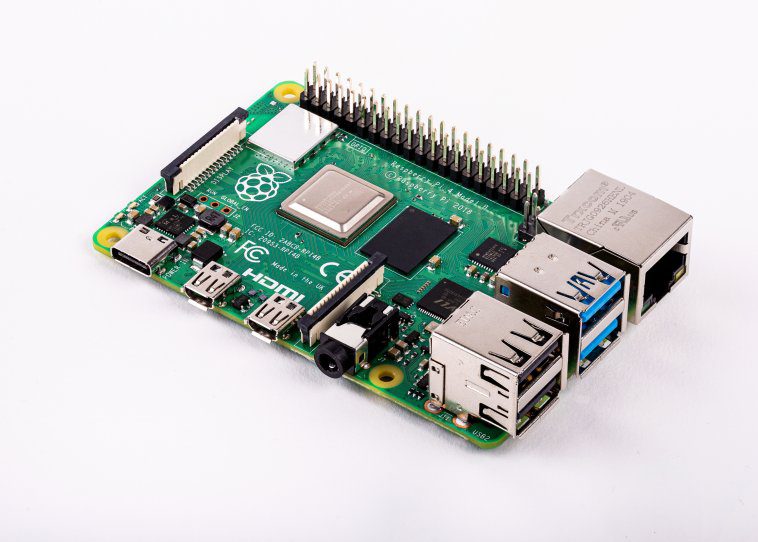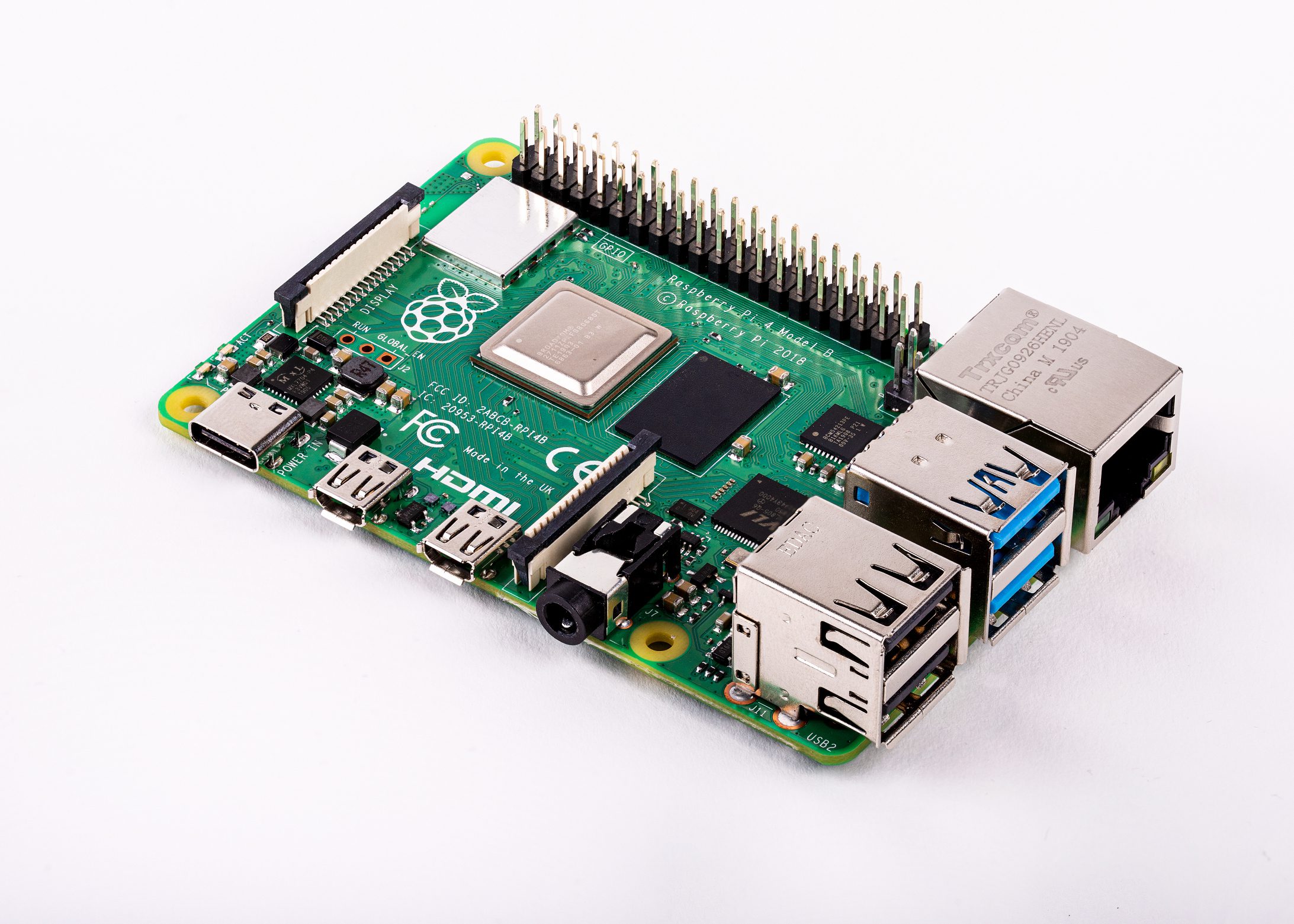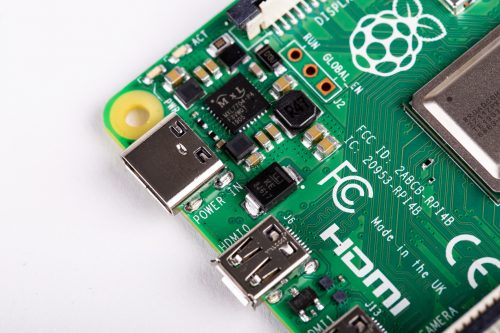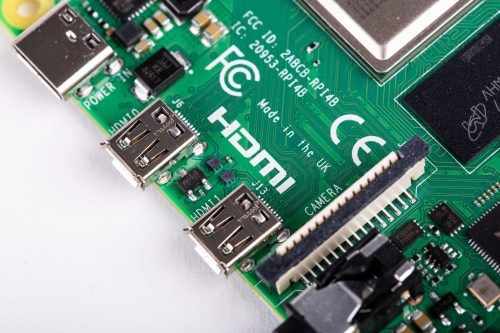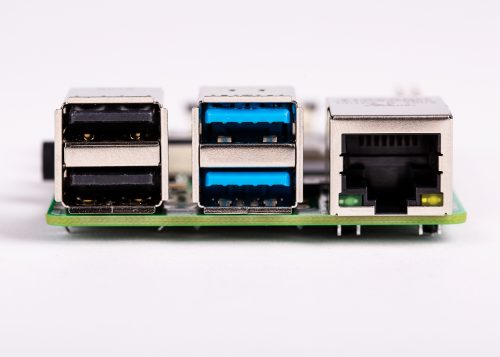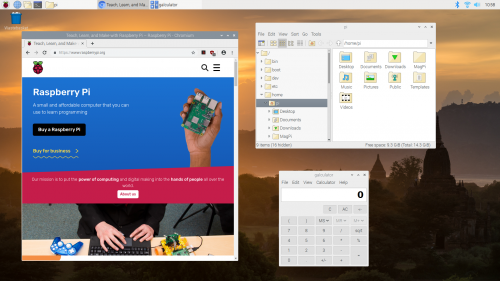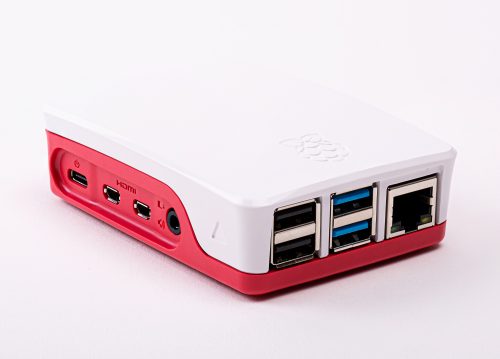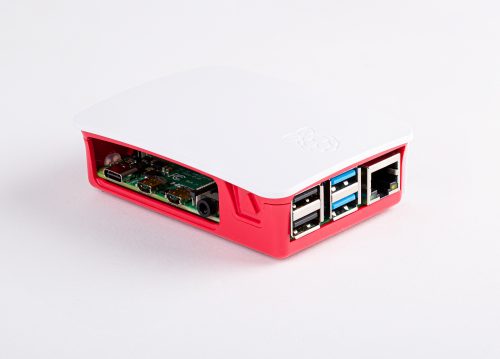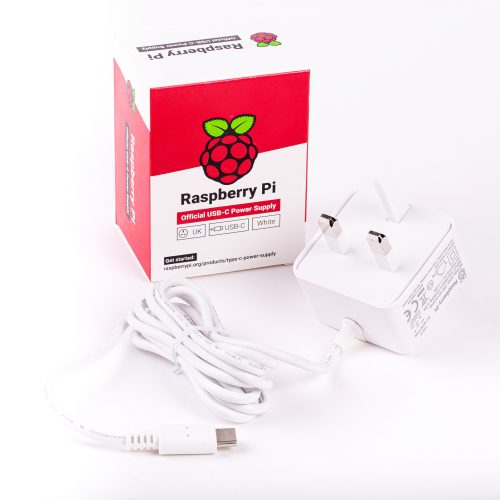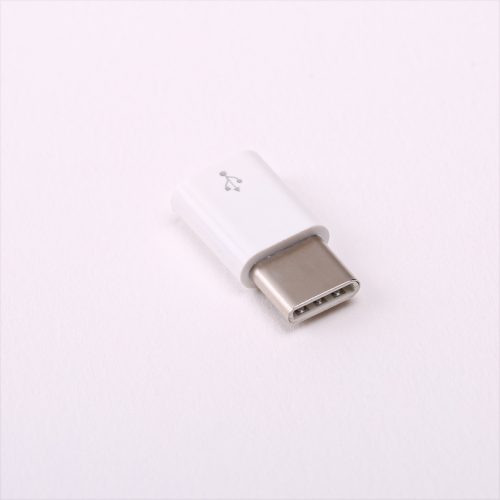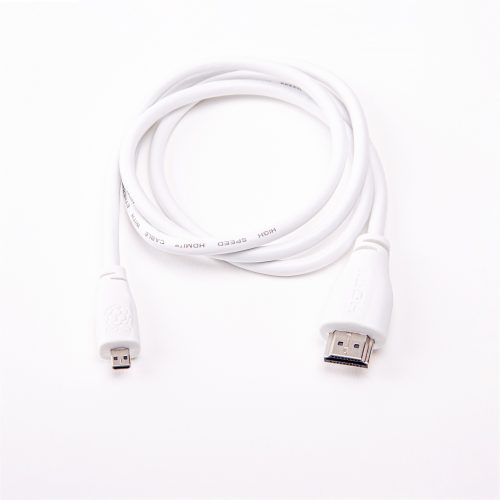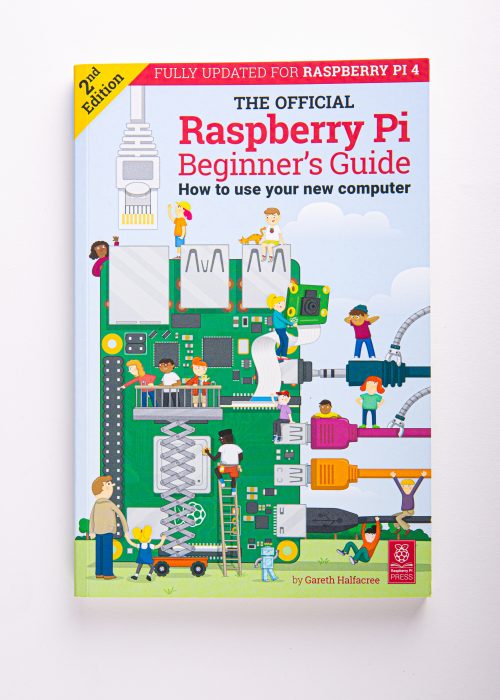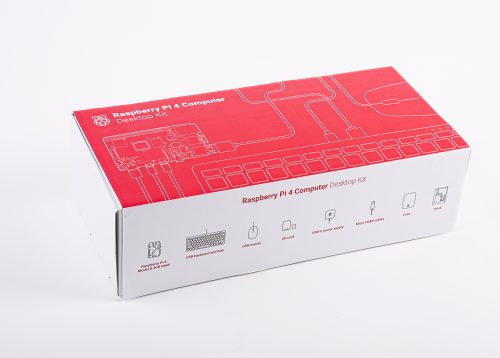We have a surprise for you today: Raspberry Pi 4 is now on sale, starting at $35. This is a comprehensive upgrade, touching almost every element of the platform. For the first time we provide a PC-like level of performance for most users, while retaining the interfacing capabilities and hackability of the classic Raspberry Pi line.
Raspberry Pi 4: your new $35 computer
Get your Raspberry Pi 4 now: http://rpf.io/ytraspberrypi4 #RaspberryPi4 Subscribe to our YouTube channel: http://rpf.io/ytsub Help us reach a wider audience by translating our video content: http://rpf.io/yttranslate Buy a Raspberry Pi from one of our Approved Resellers: http://rpf.io/ytproducts Find out more about the #RaspberryPi Foundation: Raspberry Pi http://rpf.io/ytrpi Code Club UK http://rpf.io/ytccuk Code Club International http://rpf.io/ytcci CoderDojo http://rpf.io/ytcd Check out our free online training courses: http://rpf.io/ytfl Find your local Raspberry Jam event: http://rpf.io/ytjam Work through our free online projects: http://rpf.io/ytprojects Do you have a question about your Raspberry Pi?
- Werbung -- Werbung -
Get yours today from our Approved Resellers, or from the Raspberry Pi Store in Cambridge, open today 8am–8pm!
Raspberry Pi 4 Model B
Here are the highlights:
- A 1.5GHz quad-core 64-bit ARM Cortex-A72 CPU (~3× performance)
- 1GB, 2GB, or 4GB of LPDDR4 SDRAM
- Full-throughput Gigabit Ethernet
- Dual-band 802.11ac wireless networking
- Bluetooth 5.0
- Two USB 3.0 and two USB 2.0 ports
- Dual monitor support, at resolutions up to 4K
- VideoCore VI graphics, supporting OpenGL ES 3.x
- 4Kp60 hardware decode of HEVC video
- Complete compatibility with earlier Raspberry Pi products
And here it is in the flesh:
Raspberry Pi 4 memory options
This is the first time we’re offering a choice of memory capacities. We’ve gone for the following price structure, retaining our signature $35 price for the entry-level model:
| RAM | Retail price |
| 1GB | $35 |
| 2GB | $45 |
| 4GB | $55 |
As always these prices exclude sales tax, import duty (where appropriate), and shipping. All three variants are launching today: we have initially built more of the 2GB variant than of the others, and will adjust the mix over time as we discover which one is most popular.
New Raspberry Pi 4, new features
At first glance, the Raspberry Pi 4 board looks very similar to our previous $35 products, all the way back to 2014’s Raspberry Pi 1B+. James worked hard to keep it this way, but for the first time he has made a small number of essential tweaks to the form factor to accommodate new features.
Power
We’ve moved from USB micro-B to USB-C for our power connector. This supports an extra 500mA of current, ensuring we have a full 1.2A for downstream USB devices, even under heavy CPU load.
Video
To accommodate dual display output within the existing board footprint, we’ve replaced the type-A (full-size) HDMI connector with a pair of type-D (micro) HDMI connectors.
Ethernet and USB
Our Gigabit Ethernet magjack has moved to the top right of the board, from the bottom right, greatly simplifying PCB routing. The 4-pin Power-over-Ethernet (PoE) connector remains in the same location, so Raspberry Pi 4 remains compatible with the PoE HAT.
The Ethernet controller on the main SoC is connected to an external Broadcom PHY over a dedicated RGMII link, providing full throughput. USB is provided via an external VLI controller, connected over a single PCI Express Gen 2 lane, and providing a total of 4Gbps of bandwidth, shared between the four ports.
All three connectors on the right-hand side of the board overhang the edge by an additional millimetre, with the aim of simplifying case design. In all other respects, the connector and mounting hole layout remains the same, ensuring compatibility with existing HATs and other accessories.
New Raspbian software
To support Raspberry Pi 4, we are shipping a radically overhauled operating system, based on the forthcoming Debian 10 Buster release. This brings numerous behind-the-scenes technical improvements, along with an extensively modernised user interface, and updated applications including the Chromium 74 web browser. Simon will take an in-depth look at the changes in tomorrow’s blog post, but for now, here’s a screenshot of it in action.
Some advice for those who are keen to get going with Raspbian Buster right away: we strongly recommend you download a new image, rather than upgrading an existing card. This ensures that you’re starting with a clean, working Buster system. If you really, really want to try upgrading, make a backup first.
One notable step forward is that for Raspberry Pi 4, we are retiring the legacy graphics driver stack used on previous models. Instead, we’re using the Mesa “V3D” driver developed by Eric Anholt at Broadcom over the last five years. This offers many benefits, including OpenGL-accelerated web browsing and desktop composition, and the ability to run 3D applications in a window under X. It also eliminates roughly half of the lines of closed-source code in the platform.
New Raspberry Pi 4 accessories
Connector and form-factor changes bring with them a requirement for new accessories. We’re sensitive to the fact that we’re requiring people to buy these: Mike and Austin have worked hard to source good-quality, cost-effective products for our reseller and licensee partners, and to find low-cost alternatives where possible.
Raspberry Pi 4 Case
Gordon has been working with our design partners Kinneir Dufort and manufacturers T-Zero to develop an all-new two-part case, priced at $5.
We’re very pleased with how this has turned out, but if you’d like to re-use one of our existing cases, you can simply cut away the plastic fins on the right-hand side and omit one of the side panels as shown below.
Raspberry Pi 4 Power Supply
Good, low-cost USB-C power supplies (and USB-C cables) are surprisingly hard to find, as we discovered when sending out prototype units to alpha testers. So we worked with Ktec to develop a suitable 5V/3A power supply; this is priced at $8, and is available in UK (type G), European (type C), North American (type A) and Australian (type I) plug formats.
If you’d like to re-use a Raspberry Pi 3 Official Power Supply, our resellers are offering a $1 adapter which converts from USB micro-B to USB-C. The thick wires and good load-step response of the old official supply make this a surprisingly competitive solution if you don’t need a full 3 amps.
Raspberry Pi 4 micro HDMI Cables
Again, low-cost micro HDMI cables which reliably support the 6Gbps data rate needed for 4Kp60 video can be hard to find. We like the Amazon Basics cable, but we’ve also sourced a 1m cable, which will be available from our resellers for $5.
Updated Raspberry Pi Beginner’s Guide
At the end of last year, Raspberry Pi Press released the Official Raspberry Pi Beginner’s Guide. Gareth Halfacree has produced an updated version, covering the new features of Raspberry Pi 4 and our updated operating system.
Raspberry Pi 4 Desktop Kit
Bringing all of this together, we’re offering a complete Desktop Kit. This is priced at $120, and comprises:
- A 4GB Raspberry Pi 4
- An official case
- An official PSU
- An official mouse and keyboard
- A pair of HDMI cables
- A copy of the updated Beginner’s Guide
- A pre-installed 32GB microSD card
Raspberry Pi Store
This is the first product launch following the opening of our store in Cambridge, UK. For the first time, you can come and buy Raspberry Pi 4 directly from us, today. We’ll be open from 8am to 8pm, with units set up for you to play with and a couple of thousand on hand for you to buy. We even have some exclusive launch-day swag.
If you’re in the bottom right-hand corner of the UK, come on over and check it out!
New Raspberry Pi silicon
Since we launched the original Raspberry Pi in 2012, all our products have been based on 40nm silicon, with performance improvements delivered by adding progressively larger in-order cores (Cortex-A7, Cortex-A53) to the original ARM11-based BCM2835 design. With BCM2837B0 for Raspberry Pi 3B+ we reached the end of that particular road: we could no longer afford to toggle more transistors within our power budget.
Raspberry Pi 4 is built around BCM2711, a complete re-implementation of BCM283X on 28nm. The power savings delivered by the smaller process geometry have allowed us to replace Cortex-A53 with the much more powerful, out-of-order, Cortex-A72 core; this can execute more instructions per clock, yielding performance increases over Raspberry Pi 3B+ of between two and four times, depending on the benchmark.
We’ve taken advantage of the process change to overhaul many other elements of the design. We moved to a more modern memory technology, LPDDR4, tripling available bandwidth; we upgraded the entire display pipeline, including video decode, 3D graphics and display output to support 4Kp60 (or dual 4Kp30) throughput; and we addressed the non-multimedia I/O limitations of previous devices by adding on-board Gigabit Ethernet and PCI Express controllers.
Raspberry Pi 4 FAQs
We’ll keep updating this list over the next couple of days, but here are a few to get you started.
Wait, is it 2020 yet?
In the past, we’ve indicated 2020 as a likely introduction date for Raspberry Pi 4. We budgeted time for four silicon revisions of BCM2711 (A0, B0, C0, and C1); in comparison, we ship BCM2835C2 (the fifth revision of that design) on Raspberry Pi 1 and Zero.
Fortunately, 2711B0 has turned out to be production-ready, which has taken roughly 9–12 months out of the schedule.
Are you discontinuing earlier Raspberry Pi models?
No. We have a lot of industrial customers who will want to stick with the existing products for the time being. We’ll keep building these models for as long as there’s demand. Raspberry Pi 1B+, 2B, 3B, and 3B+ will continue to sell for $25, $35, $35, and $35 respectively.
What about a Model A version?
Historically, we’ve produced cut-down, lower-cost, versions of some of our $35 products, including Model 1A+ in 2014, and Model 3A+ at the end of last year. At present we haven’t identified a sensible set of changes to allow us to do a “Model 4A” product at significantly less than $35. We’ll keep looking though.
What about the Compute Module?
CM1, CM3, and CM3+ will continue to be available. We are evaluating options for producing a Compute Module product based on the Raspberry Pi 4 chipset.
Are you still using VideoCore?
Yes. VideoCore 3D is the only publicly documented 3D graphics core for ARM‑based SoCs, and we want to make Raspberry Pi more open over time, not less.
Credits
A project like Raspberry Pi 4 is the work of many hundreds of people, and we always try to acknowledge some of those people here.
This time round, particular credit is due to James Adams, who designed the board itself (you’ll find his signature under the USB 3.0 socket); to Mike Buffham, who ran the commercial operation, working with suppliers, licensees, and resellers to bring our most complicated product yet to market; and to all those at Raspberry Pi and Broadcom who have worked tirelessly to make this product a reality over the last few years.
A partial list of others who made major direct contributions to the BCM2711 chip program, CYW43455, VL805, and MxL7704 integrations, DRAM qualification, and Raspberry Pi 4 itself follows:
James Adams, Cyrus Afghahi, Snehil Agrawal, Sam Alder, Kiarash Amiri, Andrew Anderson, Eng Lim Ang, Eric Anholt, Greg Annandale, Satheesh Appukuttan, Amy Au, Ben Avison, Matt Bace, Neil Bailey, Jock Baird, Scott Baker, Alix Ball, Giles Ballard, Paul Barnes, Russell Barnes, Fiona Batchelor, Alex Bate, Kris Baxter, Paul Beech, Michael Belhazy, Jonathan Bell, John Bellairs, Oguz Benderli, Doug Berger, Ron Berthiaume, Raj Bharadwaj, Udaya Bhaskar, Geoff Blackman, Ed Bleich, Debbie Brandenburg, David Brewer, Daniel Brierton, Adam Brown, Mike Buffham, Dan Caley, Mark Calleja, Rob Canaway, Cindy Cao, Victor Carmon, Ian Carter, Alex Carter, Amy Carter, Mark Castruita, KK Chan, Louis Chan, Nick Chase, Sherman Chen, Henry Chen, Yuliang Cheng, Chun Fai Cheung, Ravi Chhabra, Scott Clark, Tim Clifford, Nigel Clift, Dom Cobley, Steve Cole, Philip Colligan, Stephen Cook, Sheena Coote, Sherry Coutu, John Cowan-Hughes, John Cox, Peter Coyle, Jon Cronk, Darryl Cross, Steve Dalton, Neil Davies, Russell Davis, Tom De Vall, Jason Demas, Todd DeRego, Ellie Dobson, David Doyle, Alex Eames, Nicola Early, Jeff Echtenkamp, Andrew Edwards, Kevin Edwards, Phil Elwell, Dave Emett, Jiin Taur Eng, Gabrielle England, YG Eom, Peggy Escobedo, Andy Evans, Mark Evans, Florian Fainelli, David Ferguson, Ilan Finkelstein, Nick Francis, Liam Fraser, Ian Furlong, David Gammon, Jan Gaterman, Eric Gavami, Doug Giles, Andrew Goros, Tim Gover, Trevor Gowen, Peter Green, Simon Greening, Tracey Gregory, Efim Gukovsky, Gareth Halfacree, Mark Harris, Lucy Hattersley, James Hay, Richard Hayler, Gordon Henderson, Leon Hesch, Albert Hickey, Kevin Hill, Stefan Ho, Andrew Hoare, Lewis Hodder, William Hollingworth, Gordon Hollingworth, Michael Horne, Wanchen Hsu, David Hsu, Kevin YC Huang, Pei Huang, Peter Huang, Scofield Huang, James Hughes, Andy Hulbert, Carl Hunt, Rami Husni, Steven Hwang, Incognitum, Bruno Izern, Olivier Jacquemart, Mini Jain, Anurag Jain, Anand Jain, Geraint James, Dinesh Jayabharathi, Vinit Jayaraj, Nick Jeffery, Mengjie Jiang, David John, Alison Johnston, Lily Jones, Richard Jones, Tony Jones, Gareth Jones, Lijo Jose, Nevin Jose, Gary Kao, Gary Keall, Gerald Kelly, Ian Kersley, Gerard Khoo, Dani Kidouchim, Phil King, Andreas Knobloch, Bahar Kordi-Borojeni, Shuvra Kundu, Claire Kuo, Nicole Kuo, Wayne Kusumo, Koen Lampaert, Wyn Landon, Trever Latham, William Lee, Joon Lee, William Lee, Dave Lee, Simon Lewis, David Lewsey, Sherman Li, Xizhe Li, Jay Li, John CH Lin, Johan Lin, Jonic Linley, Chris Liou, Lestin Liu, Simon Long, Roy Longbottom, Patrick Loo, James Lougheed, Janice Lu, Fu Luo-Larson, Jeff Lussier, Helen Lynn, Terence Mackown, Neil MacLeod, Kevin Malone, Shahin Maloyan, Tim Mamtora, Stuart Martin, Simon Martin, Daniel Mason, Karen Matulis, Andrea Mauri, Scott McGregor, Steven Mcninch, Ben Mercer, Kamal Merchant, James Mills, Vassil Mitov, Ali Syed Mohammed, Brendan Moran, Alan Morgan, Giorgia Muirhead, Fiacre Muller, Aram Nahidipour, Siew Ling Ng, Thinh Nguyen, Lee Nguyen, Steve Noh, Paul Noonan, Keri Norris, Rhian Norris, Ben Nuttall, Brian O’Halloran, Martin O’Hanlon, Yong Oh, Simon Oliver, Mandy Oliver, Emma Ormond, Shiji Pan, Kamlesh Pandey, Christopher Pasqualino, Max Passell, Naush Patuck, Rajesh Perruri, Eric Phiri, Dominic Plunkett, Nutan Raj, Karthik Rajendran, Rajendra Ranmale, Ashwin Rao, Nick Raptopoulos, Chaitanya Ray, Justin Rees, Hias Reichl, Lorraine Richards, David Richardson, Tim Richardson, Dan Riiff, Peter de Rivaz, Josh Rix, Alwyn Roberts, Andrew Robinson, Kevin Robinson, Nigel Roles, Paul Rolfe, Marcelo Romero, Jonathan Rosenfeld, Sarah Roth, Matt Rowley, Matthew Rowley, Dave Saarinen, Ali Salem, Suzie Sanders, Graham Sanderson, Aniruddha Sane, Marion Scheuermann, Serge Schneider, Graham Scott, Marc Scott, Saran Kumar Seethapathi, Shawn Shadburn, Abdul Shaik, Mark Skala, Graham Smith, Michael Smith, Martin Sperl, Ajay Srivastava, Nick Steele, Ben Stephens, Dave Stevenson, Mike Stimson, Chee Siong Su, Austin Su, Prem Swaroop, Grant Taylor, Daniel Thompsett, Stuart Thomson, Eddie Thorn, Roger Thornton, Chris Tomlinson, Stephen Toomey, Mohamed Toubella, Frankie Tsai, Richard Tuck, Mike Unwin, Liz Upton, Manoj Vajhallya, Sandeep Venkatadas, Divya Vittal, John Wadsworth, Stefan Wahren, Irene Wang, Jeremy Wang, Rich Wells, Simon West, Joe Whaley, Craig Wightman, Oli Wilkin, Richard Wilkins, Sarah Williams, Jack Willis, Rob Wilson, Luke Wren, Romona Wu, Zheng Xu, Paul Yang, Pawel Zackiewicz, Ling Zhang, Jean Zhou, Ulf Ziemann, Rob Zwetsloot.
If you’re not on this list and think you should be, please let me know, and accept my apologies.
Website: LINK

